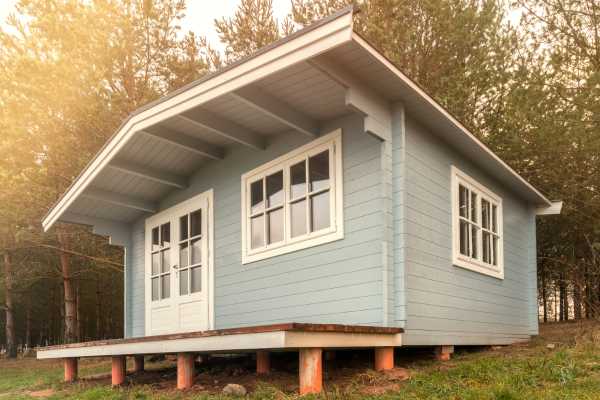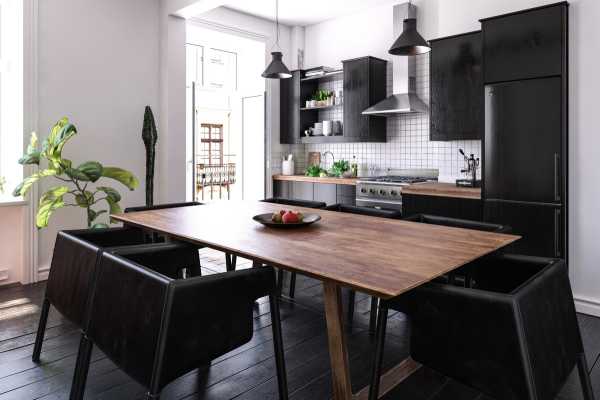Indeed, inhabiting a tiny house has the potential to reduce stress and anxiety levels.
The limited space prompts occupants to prioritize necessities, resulting in a more orderly and neat living space.
Additionally, being close to nature and experiencing financial freedom may contribute to maintaining a calmer and more harmonious mental state.
What are the mental health advantages of living nearer to nature in a tiny house?
Studies indicate that being in proximity to nature offers numerous mental health benefits.
Opting for picturesque natural environments, such as forests or mountains often associated with compact residences, can promote relaxation, diminish feelings of depression, and enhance overall emotional well-being.
How does residing in a tiny house lead to financial freedom?
Dwelling in a small home typically slashes housing expenses, utility bills, and maintenance costs.
The affordability of tiny houses empowers individuals to attain financial independence, easing financial burdens and allowing them to concentrate on personal development and happiness.
Can living in a tiny house foster a sense of community?
Undoubtedly, inhabiting a tiny house can nurture a stronger sense of community. Many occupants of tiny houses form tight-knit communities and support systems.
The close living arrangements encourage social interaction, nurturing social ties and a feeling of belonging.
Compact Family Dwelling
The concept of residing in a diminutive domicile has garnered increased favor among numerous families in recent times.
Tiny houses, characterized by their compactness and emphasis on sustainability, typically range from 100 to 400 square feet.
While the notion of inhabiting such modest quarters may daunt some, many families discover that the advantages outweigh any perceived drawbacks.
Reasons for Family Preference towards Tiny Houses:
There’s a growing appeal among families for tiny houses due to various reasons. One of the primary draws is the financial independence they offer.
Tiny houses come at a fraction of the cost of traditional homes, empowering families to lessen or eradicate their dependence on mortgages and utility bills.
This financial freedom opens up avenues for travel, education, and experiences that might otherwise be out of reach if they were tied to larger, more expensive homes.
Benefits of Family Living in Compact Spaces:
Residing in smaller confines fosters tighter bonds and cultivates healthier relationships within families. With limited space, family members are naturally inclined to spend more time together, nurturing a sense of togetherness and shared experiences.
Furthermore, the reduced consumption and waste associated with living in a tiny house promote a simpler, more environmentally conscious lifestyle.
Strategizing for Family-Friendly Tiny Houses:
When designing a small dwelling to accommodate a family, meticulous consideration must be given to the available space and its intended functionality.
Every inch of space needs to be utilized efficiently to cater to the diverse needs of family members.
Customizing Space and Functionality:
Tailoring a small residence for a family necessitates understanding the unique needs and daily routines of each member to ensure functionality.
Allocation of specific zones for sleeping, working, recreation, and storage helps in providing everyone with their own space while safeguarding their privacy.
Innovative Solutions for Storage and Organization:
In compact homes, maximizing storage capacity is crucial. Clever storage solutions such as foldable furniture, concealed compartments, and wall-mounted shelves help maintain a clutter-free living environment.
Versatile Furniture Ideas:
Versatility is key when selecting furniture for small spaces. Examples of intelligent furniture choices for families in tiny homes include sofa-beds and collapsible dining tables, which optimize space utilization.
Choosing the Right Setting:
Although tiny houses are often associated with rural living, families can also find suitable accommodations in urban environments.
Considering Urban vs. Rural Living:
City dwellers enjoy easy access to amenities, employment opportunities, and cultural offerings, while rural living offers tranquility, gardening space, and a deeper connection with nature.
Navigating Zoning and Legal Requirements:
Before settling on a location for their tiny house, families should research local zoning laws and building codes to ensure compliance.
Exploring Community Living Alternatives:
Some families opt for communal living arrangements, joining small family communities to foster a sense of camaraderie and mutual support.

In Conclusion:
Living in a tiny house with family can be a rewarding experience, promoting simplicity, sustainability, and familial intimacy.
Through minimalist principles, innovative design, and eco-friendly practices, families can create a comfortable and harmonious abode despite its compact size.
As the tiny house movement gains momentum, more families are considering this lifestyle choice, contributing to its continued growth and evolution.
Keep reading our articles:
Exploring Plumbing Solutions for Compact Dwellings
FAQs:
1. Are tiny houses suitable for families with children?
Yes, many families with children find tiny house living enjoyable and enriching, fostering quality time together and instilling valuable lessons in simplicity and minimalism.
2. Can I construct a tiny house on my own, or do I need to hire a professional?
While building a tiny house can be a DIY project, it requires careful planning and some construction skills. Hiring a professional builder ensures a well-designed and structurally sound home.
3. What environmental benefits do tiny houses offer?
Tiny houses promote sustainability through lower energy consumption and the use of eco-friendly materials, resulting in a smaller ecological footprint.
4. How can tiny homes address storage challenges?
Tiny house families employ innovative storage solutions such as hidden compartments, wall shelves, and multifunctional furniture to maximize limited space.
5. Is living in a tiny house a permanent arrangement, or can families transition to larger homes later?
Living in a tiny house isn’t necessarily permanent; families have the flexibility to move to larger homes if circumstances change.
However, many find long-term satisfaction in small-scale living.


